
Ornamental grasses are one of the few types of plants that can survive the excessive summer heat while adding lovely textures, height, and even colors to your landscape. And high on the list of most popular ornamental grasses is purple fountain grass.
Its deep purple foliage and long fluffy blooms make a statement in any landscape. Purple fountain grass, like most in the ornamental grass family, is very easy to care for, flourishing under a wide range of conditions.
Despite how easy-going purple fountain grass is, knowing a bit more about it won’t hurt, ensuring that it thrives in your garden whether planted as a natural screen, in containers, or in garden beds.

Plant Overview
Purple fountain grass, or Pennisetum setaceum ‘Rubrum’, belongs to the Poaceae family. This family is the fifth-largest plant family and it refers to grasses – which includes all cereal grasses, your ‘typical’ lawn grasses, and even bamboos. The genus to which Rubrum belongs is Pennisetum, which quite literally means ‘fountain grass’.
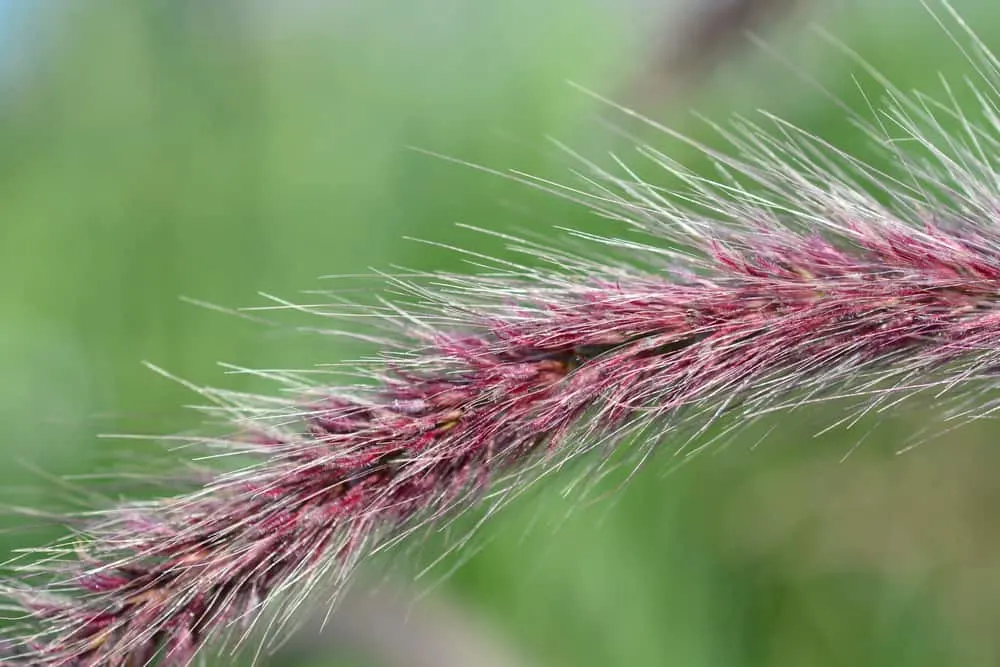
Is Purple Fountain Grass A Perennial?
Purple fountain grass is a tender perennial. This means that it can’t survive cold winters like some others in the ornamental grass category, thriving in USDA zones 9-11.
But you can still enjoy purple fountain grass, with its long, arching spikes, tipped with purple plumes, in cooler climates. You can easily grow purple fountain grass as an annual, or provide protection over winter to help it thrive year after year.
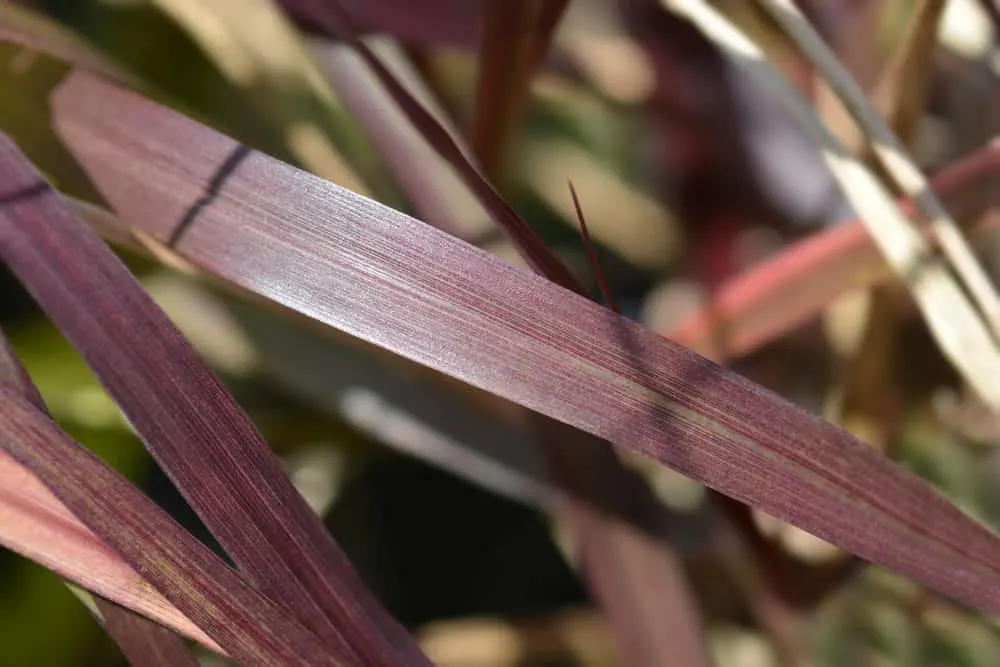
Purple fountain grass is a beautiful plant that adds texture and splashes of – as you guessed it, purple or burgundy – to your garden. It can grow to between three and five feet high, adding height to your space as well.
It’s important to note that fountain grass is considered an invasive species in certain areas. However, the ‘Rubrum’ cultivar is largely exempt from this classification as it doesn’t set seed. If you’re looking to plant fountain grass but don’t want to jeopardize the surrounding landscape, Rubrum is your answer.
Planting Purple Fountain Grass
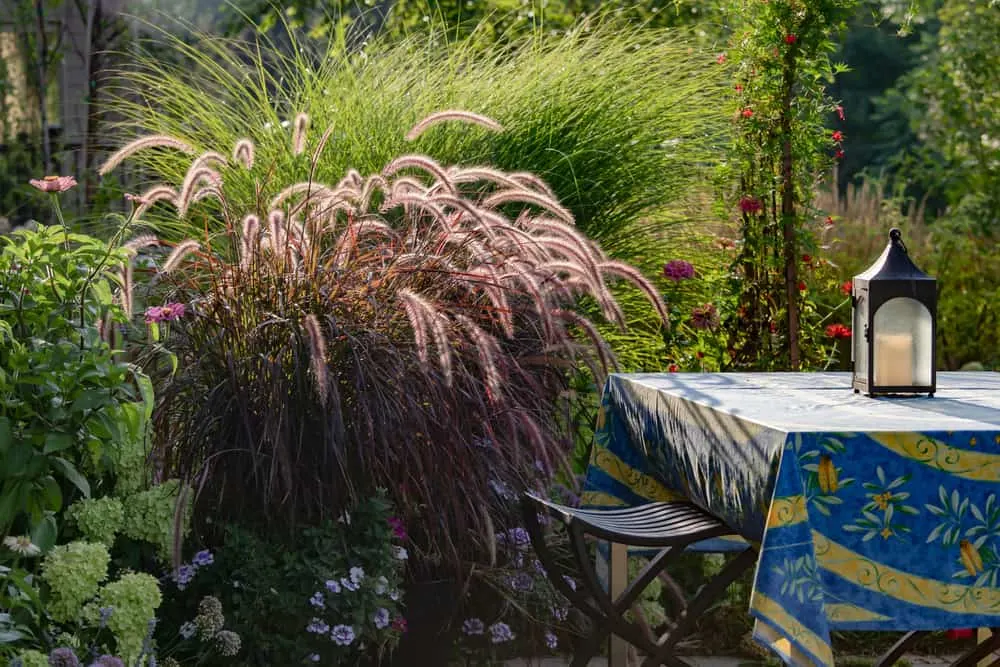
Like most ornamental grasses, you can plant purple fountain grass around fall or spring. However, it’s recommended to plant it in spring to take advantage of the peak growing season.
Given that mature plants can grow to about 5 feet tall and almost as wide, purple fountain grass needs plenty of space to breathe. You’ll need to space them three to five feet apart, with a hole deep and wide enough to accommodate its roots. Ensure you water thoroughly and deeply once planted.
Choose a spot protected from very strong winds to help the plant keep its fountain-like shape.
Purple Fountain Grass Care
Light

Purple fountain grass loves basking in the sunlight, where its purple leaves and fluffy spikes can take in the rays. For it to truly thrive, Rubrum needs at least eight hours of sunlight a day. However, it can survive in some light shade, so don’t be afraid to plant it along walls if you’re fine with a slower-growing plant.
Water
As mentioned, purple fountain grass needs a good, deep watering once it’s planted. You’ll need to water your fountain grass often until the roots are established. Once or twice a week should do. Always let the soil become dry to the touch before you water next.
Once it’s rooted in your chosen spot, purple fountain grass is drought tolerant. If you live in a hot and dry climate, it’ll need to be watered slightly more often, but isn’t incredibly thirsty.
Soil
Purple fountain grass isn’t a picky plant, as I’m sure you’ve deduced. This easy-going nature extends to the soil in which it’s planted. Purple fountain grass thrives in most soil types, as long as it’s well-draining.
Climate and Temperature
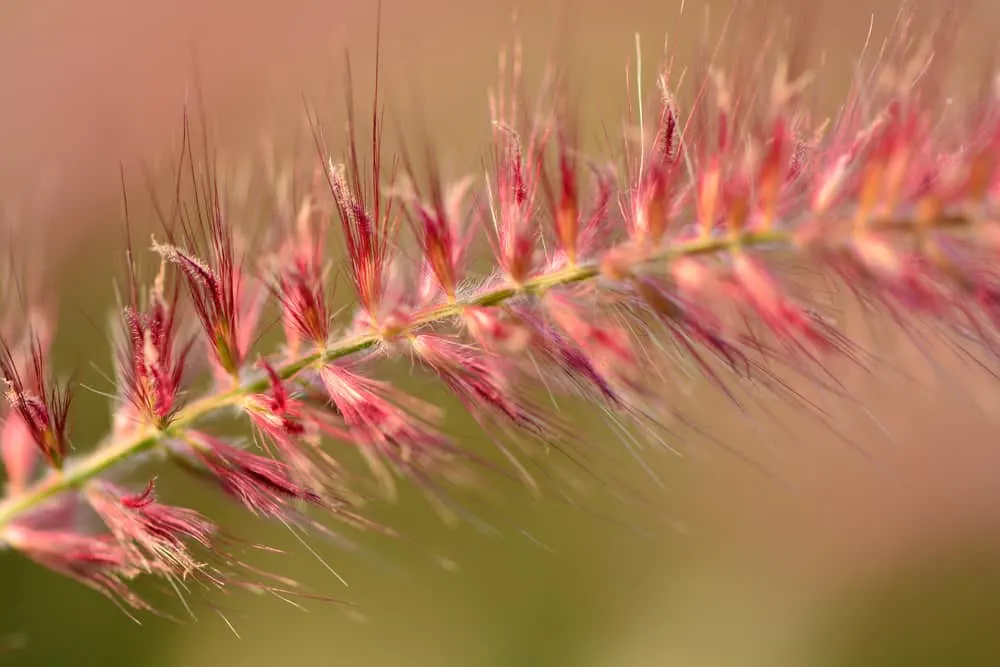
Purple fountain grass thrives in warmer climates, but doesn’t have any specific requirements beyond that.
Even though it’s hardy in USDA zones 9-11, you’ll find that your fountain grass can tolerate short bouts of cold snaps.
Cooler climates with especially cold winters will have to enjoy purple fountain grass as an annual, best planted in spring to enjoy its beauty until fall.
That is unless you don’t mind putting in protective measures like frost blankets to keep the cold from getting your plant. Or, you could simply bring your purple fountain grass indoors if planted in a pot, although it will not grow as well as it would under optimal conditions.
Fertilizer
As purple fountain grass thrives in most soil types and under a variety of conditions, it doesn’t need a helping hand to flourish.
You may choose to give it a slow-release fertilizer in spring to give it an extra boost of nutrients over summer if its growth is slow.
Maintenance
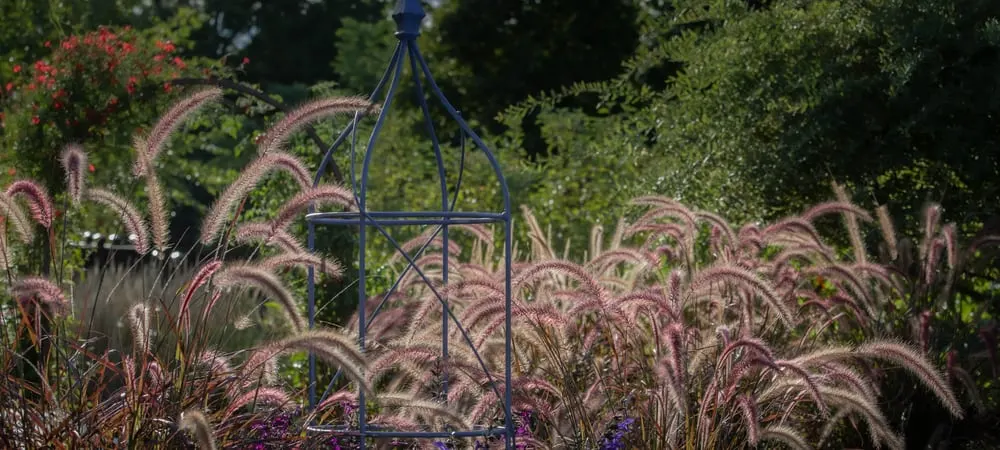
Pruning purple fountain grass is perhaps the only thing you’ll need to do when it comes to maintenance. Throughout the year, snip away any dead foliage around the plant. This increases airflow around the plant and allows for sunlight to reach every inch of the plant.
Or, you can do a big chop in late winter or early spring to encourage fresh growth during the new growing season.
The big chop involves gathering all the leaves of the plant and binding them together. With your trusty secateurs, cut across the bound leaves, about five inches above the base of the plant.
Always carefully comb and pick through your purple fountain grass for any stray dead leaves and debris to keep it looking its best.
Growing Purple Fountain Grass in Containers
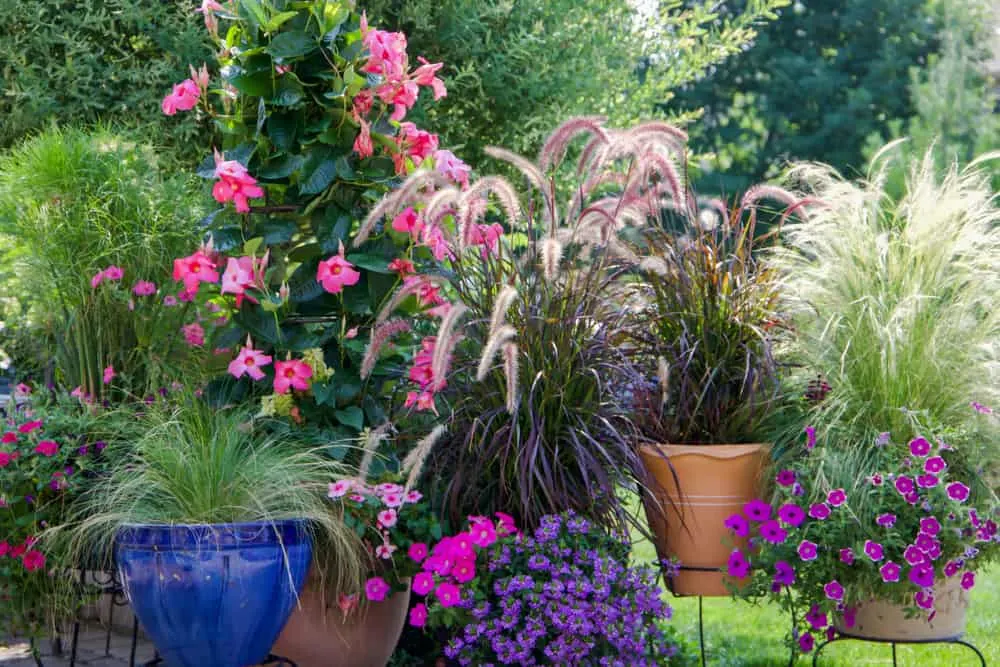
Purple fountain grass doesn’t need to be planted in perfectly manicured beds. They look great and thrive just as well in containers too.
You can grow your purple fountain grass in a container with a bunch of flowering plants, or as a statement plant on its own.
The most important measures to take when planting your purple fountain grass in containers are the size of said container and its drainage properties.
As purple fountain grass is relatively large, you’ll need a big enough pot to happily accommodate its roots. You’ll also need a pot with drainage holes so the soil isn’t waterlogged.
Your purple fountain grass should flourish as long as it gets enough sunlight and has space to grow.
Growing fountain grass in containers makes it easier to bring it indoors during unexpected cold spells. It also allows for interesting ways to play with the design of your landscape, without committing to planting in the ground.
Propagating Purple Fountain Grass
Propagating your purple fountain grass is quite simple by division.
Dig up the plant as it begins to go dormant. Simply cut the plant into multiple sections, roots and all, and replant them as quickly as possible. Water well, as you would with a new, young, fountain grass plant.
Pests and Diseases

Another wonderful thing about purple fountain grass is its resistance to pests and diseases. It’s also among the few plants that are deer resistant too. However, if you’re unlucky in this department, you may still come across a few issues to address.
Slugs and snails love to nibble on grasses, and purple fountain grass is no exception. However, they won’t cause any serious damage, and can be picked off by hand.
Additionally, purple fountain grass is susceptible to fungus. You’ll often find fungus hiding between the blades of grass, especially in the densest parts of the plant.
The best way to combat and prevent fungus from taking hold is planting with adequate spacing and pruning often to improve airflow. Sufficient sunlight is also important, so the rays can dry out even the densest parts of the plants.
Purple Fountain Grass Uses
In the Garden…

Make the most of purple fountain grass’s height by creating a natural ‘living’ screen for added privacy in your garden. This creates a unique privacy wall that makes more of a statement than other hedges. It may be shorter than a traditional hedge, but adds plenty of flair.
But, you don’t have to have a whole wall of bright burgundy to make a statement. One or two tufts of purple fountain grass can be planted as main focal point of your design, or to complement surrounding plants.
You could also plant them in containers and place them on either end of your porch or balcony. They stand out amongst a variety of plants, even if positioned at the back of a flower bed, as their colors and textures break up the monotony of flowers and green foliage.

In the Home…
Even though purple fountain grass isn’t cold hardy, you can still enjoy its soft plumes in the colder months.
Simply snip the stems off in summer and add them to your cut flower bouquet. These grasses are an ideal candidate for drying, creating long-lasting Instagram-worthy bouquets.
